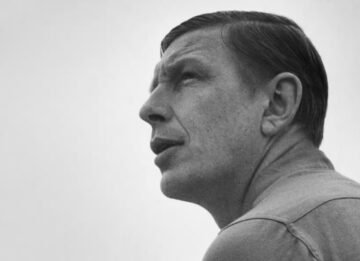Rachel Cooke in The Guardian:
 Twenty-five years ago, my father and I were out walking in the Peak District. Beside us was his dog; ahead of us was a familiar fell, low and craggy and bare. My dad was boasting, as he often did, about the cairn at its top, a pile of rocks he claimed to have nurtured into existence, when from nowhere the silhouette of a man suddenly appeared beside it: first a head, then a torso, and finally a pair of legs. “Ah,” said my dad, sage where I was startled. “A caver.” We stood and squinted. Moments later, another man materialised, and then another: a human string of sausages, pulled from the limestone’s darkest reaches as if from a top hat.
Twenty-five years ago, my father and I were out walking in the Peak District. Beside us was his dog; ahead of us was a familiar fell, low and craggy and bare. My dad was boasting, as he often did, about the cairn at its top, a pile of rocks he claimed to have nurtured into existence, when from nowhere the silhouette of a man suddenly appeared beside it: first a head, then a torso, and finally a pair of legs. “Ah,” said my dad, sage where I was startled. “A caver.” We stood and squinted. Moments later, another man materialised, and then another: a human string of sausages, pulled from the limestone’s darkest reaches as if from a top hat.
The memory of this came to me as I read The Island: WH Auden and the Last of Englishness, a new study of the poet and his world. In part, this was because Auden visited the same hills as a schoolboy; even before he famously became transfixed by the abandoned lead mines of the northern Pennines, he had seen – in 1919, when he was 12 – the Blue John Cavern near Castleton in Derbyshire, a place he would later refer to as one of the names on his “numinous map” of sacred spots. Mostly, though, it was because caving is a good metaphor for the experience of reading Nicholas Jenkins’s book, which runs to 543 pages (minus its extensive notes). Headlamp at the ready, I thought, whenever I opened it.
En route, there are lovely moments.
More here.
Enjoying the content on 3QD? Help keep us going by donating now.
